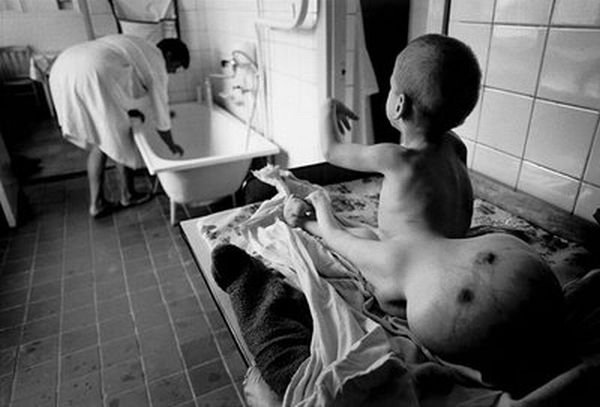|
|
Chernobyl Legacy Reportage By Paul Fusco
|
Conditions prior to the accident
The conditions to run the test were established prior to the day shift 25 April 1986. The day shift workers had been instructed in advance about the test and were familiar with procedures. A special team electrical engineers was present to test the new voltage regulating system. As planned, on 25 April a gradual reduction in the output the power unit was begun at 01:06 a.m., and by the beginning the day shift the power level had reached 50% its nominal 3200 MW thermal. At this point, another regional power station unexpectedly went f-line, and the Kiev electrical grid controller requested that the further reduction Chernobyl's output be postponed, as power was needed to satisfy the peak evening demand. The Chernobyl plant director agreed and postponed the test.
At 11:04 p.m., the Kiev grid controller allowed the reactor shut-down to resume. This delay had some serious consequences: the day shift had long since departed, the evening shift was also preparing to leave, and the night shift would not take over until midnight, well into the job. According to plan, the test should have been finalized during the day shift, and the night shift would only have had to maintain decay heat cooling systems in an otherwise shut-down plant; the night shift had very limited time to prepare for and carry out the experiment. Further rapid reduction in the power level from 50% was actually executed during the shift change-over. Alexander Akimov was chief the night shift, and Leonid Toptunov was the operator responsible for the reactor's operational regime, including the movement the control rods. Toptunov was a young engineer who had worked independently as a senior engineer for approximately three months.
|
|









